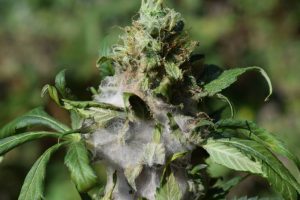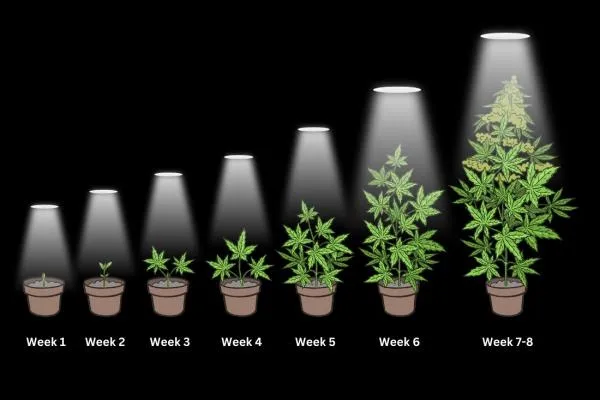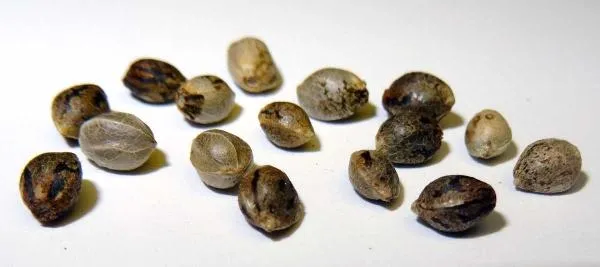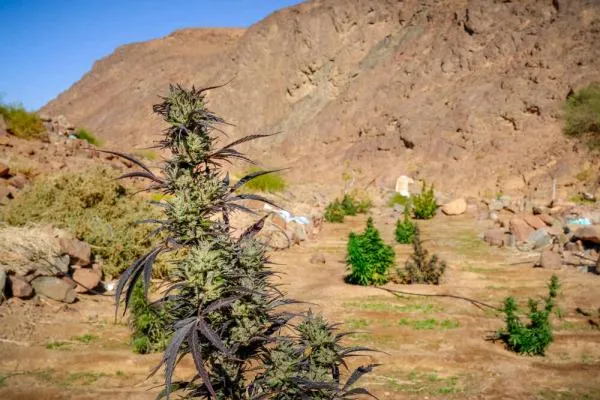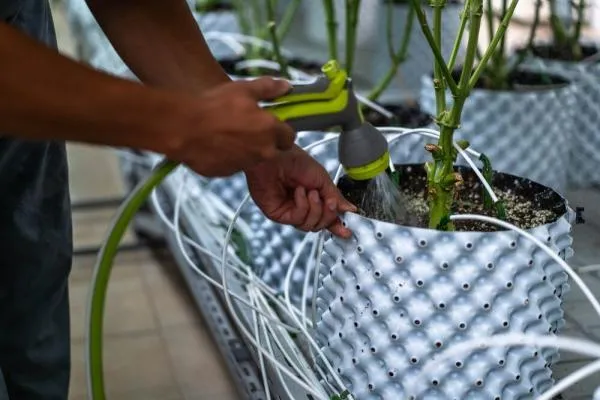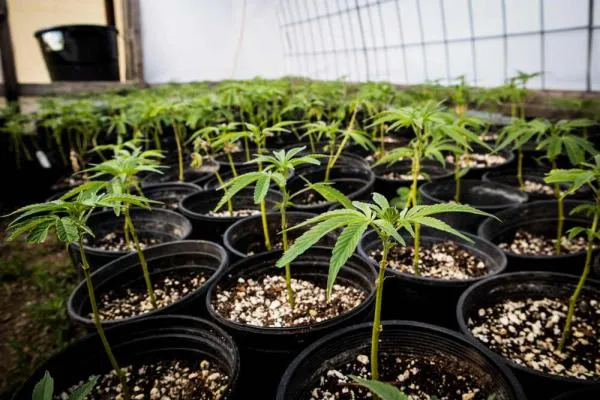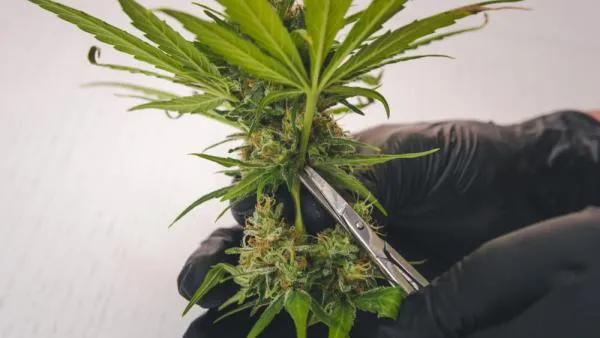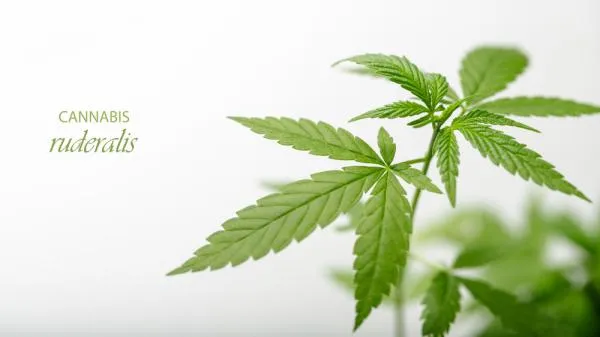Growing marijuana is a rewarding experience, but it can be a bit of a challenge, especially when mould gets involved. Mould is one of the most common problems that growers encounter, and it can ruin an entire crop if not addressed quickly. In this guide, I'll walk you through the different types of moulds that can plague your plants, how to identify them, and the best ways to prevent and get rid of them. By the end of this, you'll be better equipped to keep your cannabis mould-free and thriving!
What causes mould growth on cannabis plants?
Mould loves certain conditions, and unfortunately, some of these are exactly what cannabis plants also thrive in. Moisture, warmth, and a lack of airflow are the key culprits. Let’s break down the main causes:
Environmental factors
Mould thrives in warm, humid conditions. High humidity levels (over 60%) create a breeding ground for mould, especially in tightly packed grow spaces where air circulation is poor. Temperature fluctuations can also lead to condensation, creating the moisture that mould spores need to grow.
Improper plant care
Overwatering your marijuana plants can create a moist environment that’s perfect for fungus. Similarly, watering late in the day can leave plants wet overnight, increasing the risk of mould. Also, overcrowding your grow room without trimming or pruning leads to poor air circulation, trapping moisture around the plants.
Common areas where mould develops
Mould can appear in various places on your cannabis plants. The most common spots include:
- On the buds (especially deep inside dense buds, where bud rot can form)
- Leaves, where moisture can easily get trapped
- The base of the stem, especially if there's standing water around the plant’s base
Common types of mould found on cannabis plants
There are a few types of moulds you’re likely to encounter on cannabis plants. Knowing what each looks like will help you spot trouble before it spreads too far.
Powdery mildew
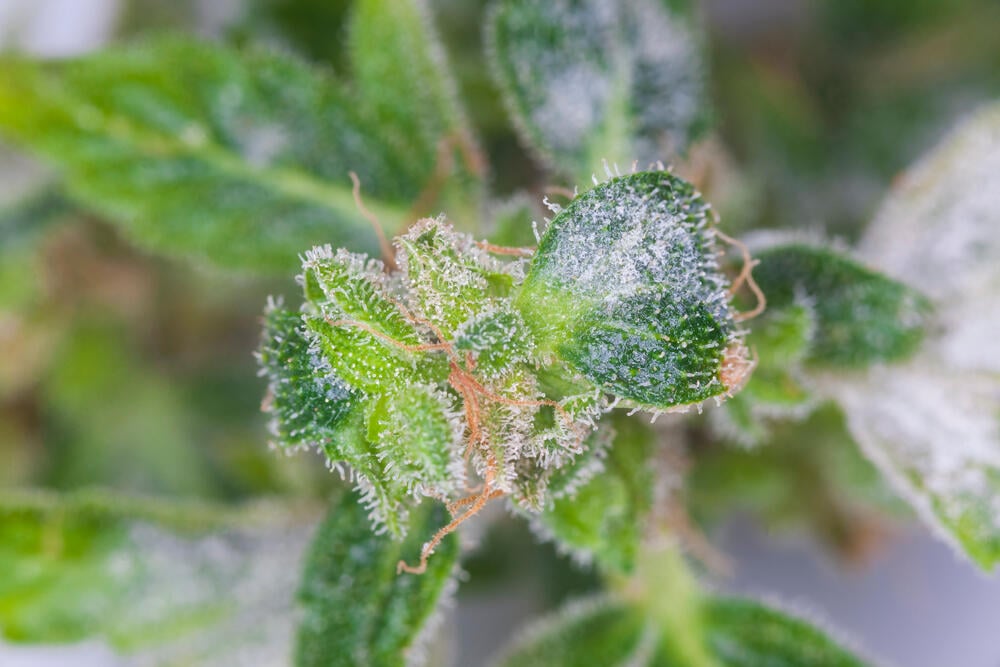
What causes it:
Powdery mildew thrives in warm, dry environments and spreads quickly when plants are overcrowded with poor air circulation. The spores can travel through the air, making it easy for the fungus to spread between plants.
Effects on plant:
This mould covers leaves and stems, hindering the plant's ability to photosynthesize effectively. Left untreated, it weakens the plant, reduces growth, and significantly impacts yield quality.
How to identify:
Look for small white, flour-like spots on the leaves that expand over time. The mould typically appears on the top surface of the leaves and is easy to spot during regular inspections.
How to treat:
Isolate infected plants to prevent the spread. Apply organic fungicides like potassium bicarbonate or neem oil. Ensure proper airflow and reduce humidity levels in the growing environment.
Botrytis (Bud Rot)
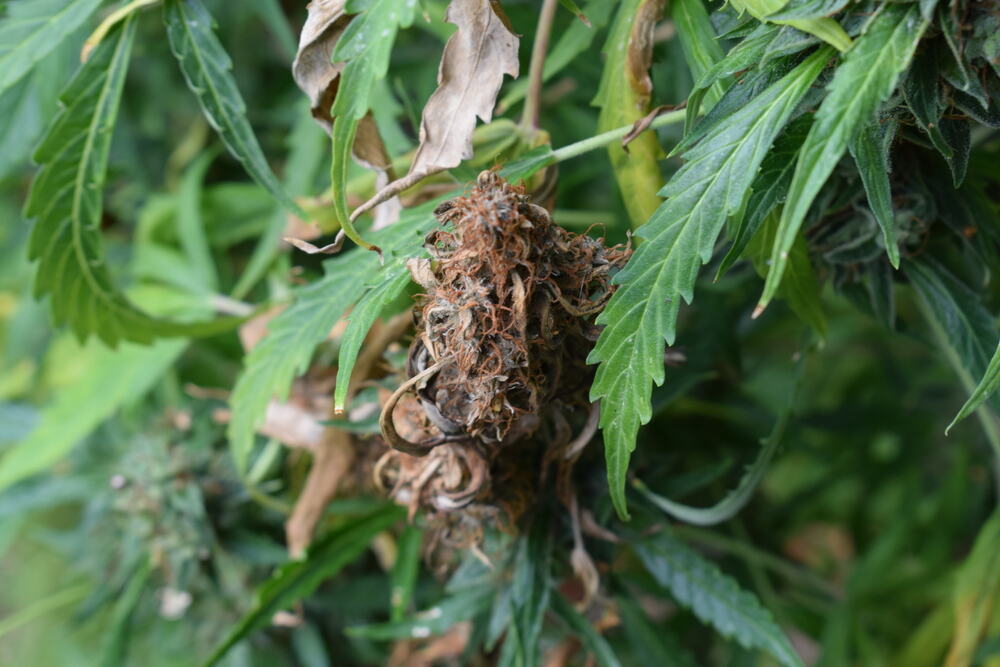
What causes it:
Botrytis develops in cool, damp conditions, often inside dense buds where moisture gets trapped. Poor ventilation and high humidity create the perfect environment for this mould to thrive.
Effects on plant:
Bud rot starts by destroying the interior of the buds, turning them into a mushy, grey mess. It can spread rapidly, wiping out entire crops if not addressed quickly.
How to identify:
The first signs include browning or wilting leaves around the bud. Upon closer inspection, the bud’s interior will reveal a grey, mouldy centre. Regularly checking buds, especially in dense plants, is crucial for early detection.
How to treat:
Remove infected buds immediately to prevent further spread. Use fungicides labelled for Botrytis control and improve air circulation and ventilation in the grow space. Reduce humidity and avoid overhead watering.
Cladosporium
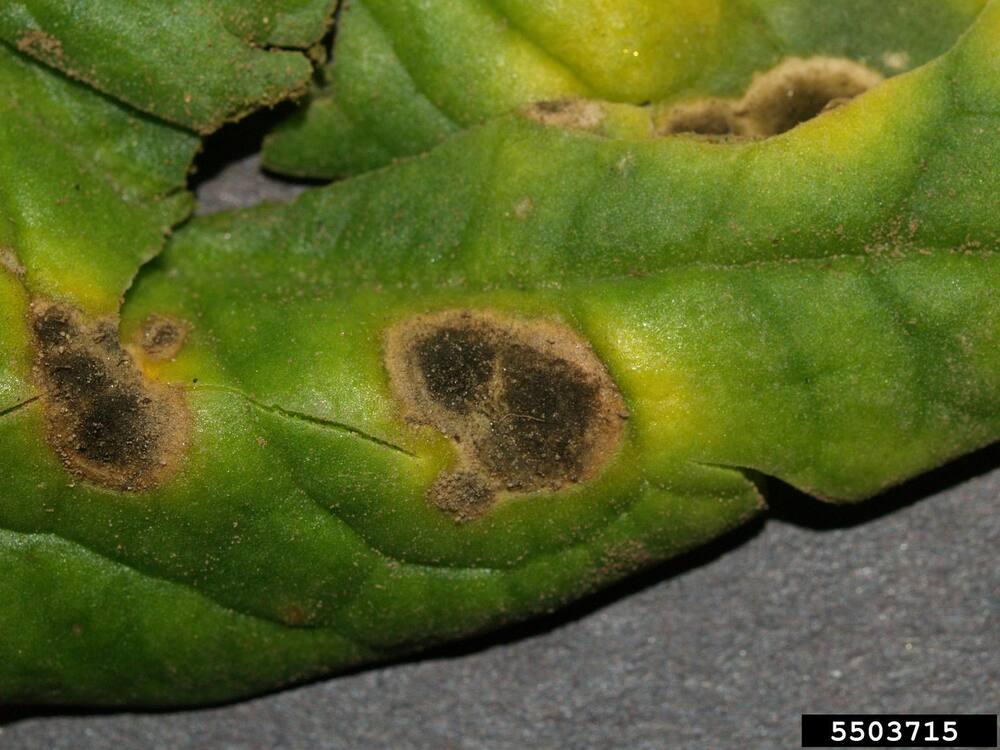
What causes it:
This mould thrives in cool, damp conditions and is more common in outdoor plants exposed to consistent moisture or rain. Contaminated soil and plant debris can also harbour the fungus.
Effects on plant:
Cladosporium causes dark spots on leaves and stems, reducing the plant’s ability to absorb light and perform photosynthesis. While not as aggressive as other moulds, it still weakens the plant over time.
How to identify:
Look for small, dark brown or black spots on the leaves and stems. These spots may be irregularly shaped and spread slowly compared to other moulds.
How to treat:
Prune infected leaves and dispose of them away from the growing area. Apply organic fungicides, such as copper-based products. Keep plants dry and improve drainage to reduce moisture exposure.
Aspergillus
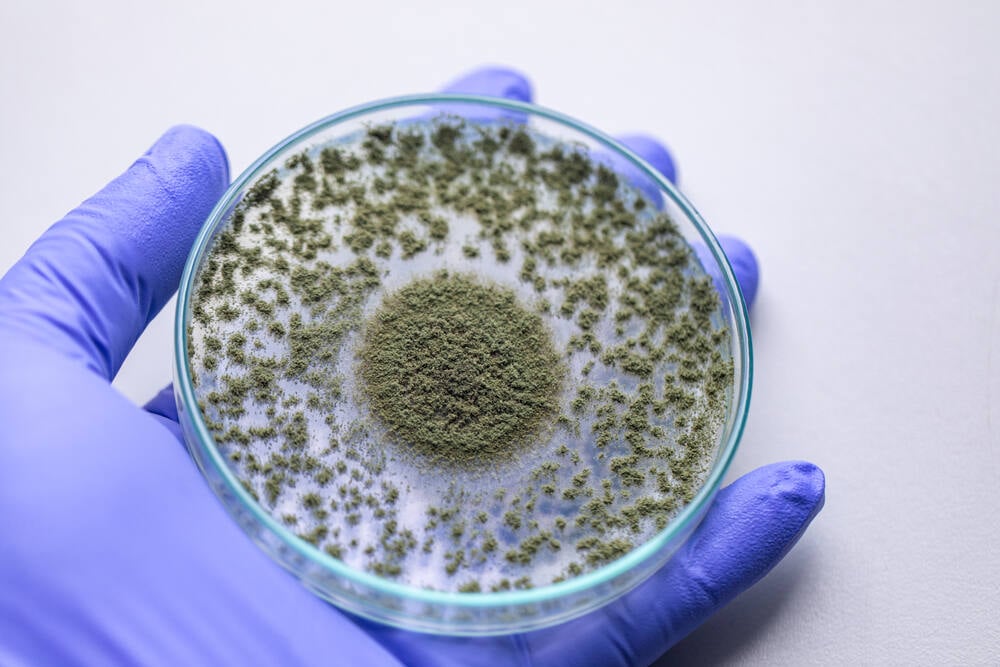
What causes it:
Aspergillus develops in overly moist conditions and can affect both plants and harvested buds. It is particularly dangerous as its spores can be harmful to humans when inhaled.
Effects on plant:
The mould appears as black or greenish fuzz on leaves and buds, reducing the plant’s vigour and making the crop unsafe for consumption.
How to identify:
Check for black or green fuzzy patches on leaves, stems, and buds. This mould often appears on plants exposed to excessive moisture or humidity.
How to treat:
Remove and discard infected plant material immediately. Sterilize tools and growing spaces to prevent contamination. Reduce humidity levels, improve airflow, and ensure proper drying of harvested buds.
White mould (Sclerotinia)
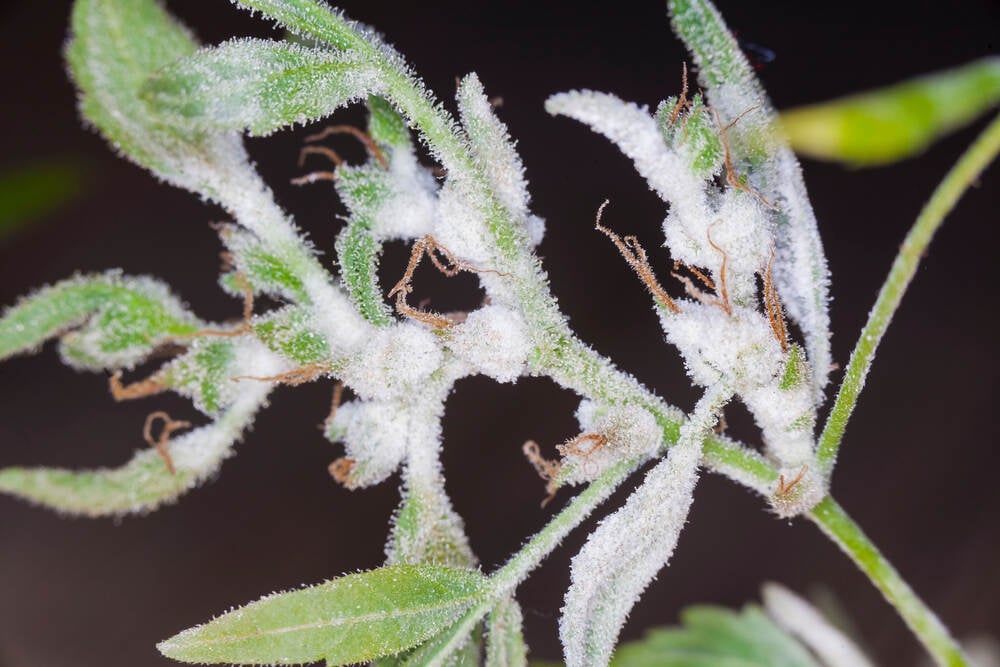
What causes it:
White mould thrives in humid conditions and spreads through contact with contaminated soil, tools, or infected plants. It often appears near the base of the plant.
Effects on plant:
This mould causes stems to wilt and rot, cutting off nutrient flow to the upper parts of the plant. It weakens the plant structure and can quickly spread to surrounding plants.
How to identify:
Look for a cottony white growth on stems or branches, usually near the base of the plant. Wilting stems and sudden plant collapse are additional warning signs.
How to treat:
Remove affected parts of the plant and improve air circulation. Apply fungicides like Bacillus subtilis or copper-based treatments. Avoid overwatering and sterilize tools to prevent reinfection.
How to remove mould from cannabis plants
If you spot mould, act fast to save your plants. Here’s what I do:
Physical removal
Carefully trim away the affected areas using sterilized scissors. Dispose of the mouldy parts far from your grow area to avoid spreading mould spores.
Application of natural remedies
Spray a mixture of water and hydrogen peroxide on the affected plants. This can help kill surface mould without harming the plant. Milk spray (milk mixed with water) is another natural option that can help curb powdery mildew.
Using commercial anti-mould products
There are commercial fungicides designed specifically for cannabis. Always choose products safe for marijuana and follow the instructions carefully to avoid harming your plants.
Post-removal plant care
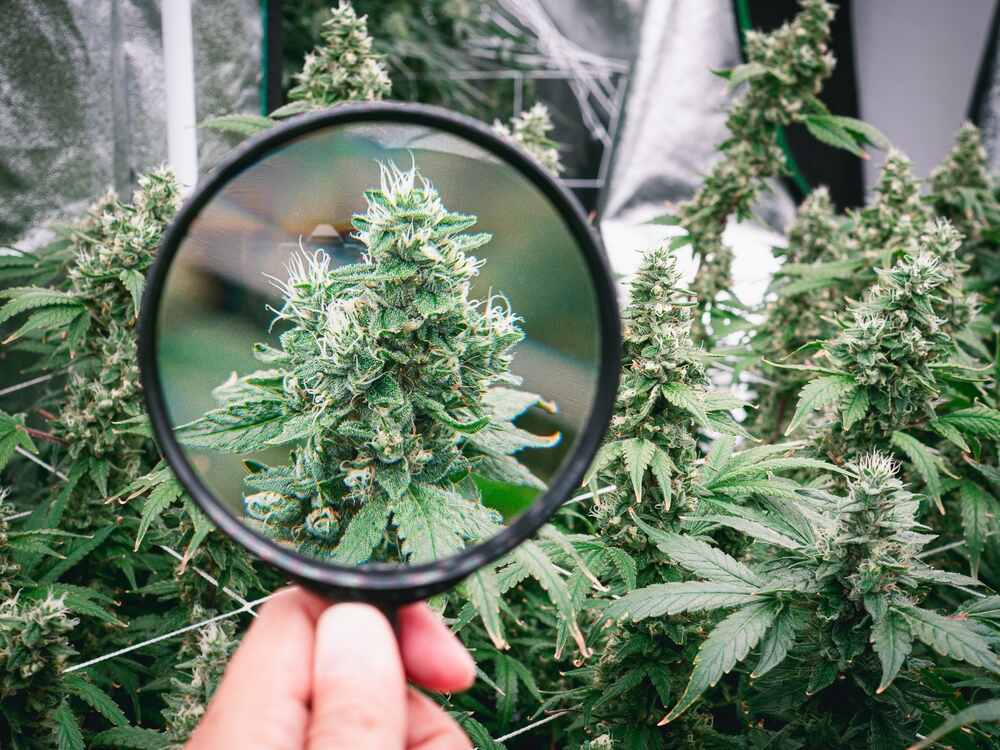
After removing mould from your cannabis plants, it’s essential to focus on creating an environment that discourages mould from returning while supporting the recovery of affected plants. Here’s a detailed guide to optimizing your grow room conditions and ensuring plant health:
1. Adjust humidity and temperature
- Lower humidity: Maintain relative humidity levels between 40-50%, especially during flowering, as high humidity encourages mould growth. Use a hygrometer to monitor humidity accurately.
- Temperature control: Keep the grow room temperature between 70-80°F (21-27°C) during the day and avoid drastic temperature drops at night. Cooler temperatures can lead to condensation, creating a favourable environment for mould.
2. Improve airflow and ventilation
- Air circulation: Use oscillating fans to ensure constant air movement around and through your plants. Proper airflow helps prevent moisture from settling on leaves and buds.
- Ventilation: Install an exhaust system with carbon filters to remove stale, humid air and bring in fresh air. This is especially critical in enclosed grow spaces like grow tents.
3. Regular plant inspection
- Daily checks: Inspect your plants daily, focusing on areas prone to mould, such as dense buds and lower leaves. Look for any signs of recurrence, such as discoloured spots or fuzzy growth.
- Use magnification: A magnifying glass or loupe can help you spot early signs of mould that might be missed by the naked eye.
4. Maintain cleanliness
- Sterilize tools: Disinfect pruning shears, scissors, and other tools before and after each use to prevent the spread of mould spores.
- Clean the grow space: Remove plant debris, sanitize surfaces, and replace contaminated soil if necessary. Mould spores can linger in the environment and re-infect plants.
5. Optimize watering practices
- Avoid overwatering: Only water your plants when the top inch of soil feels dry. Overwatering increases soil moisture, which can lead to mould.
- Water early: Water your plants early in the day so that excess moisture evaporates before nightfall.
6. Support plant recovery
- Prune damaged leaves: Trim off any remaining damaged or weak leaves to encourage healthy new growth and improve air circulation around the plant.
- Use recovery supplements: Apply organic plant supplements like seaweed extract or humic acids to boost plant immunity and recovery.
- Monitor stress levels: Mould removal can stress plants, so avoid additional stressors like extreme pruning or abrupt environmental changes during the recovery phase.
7. Preventative measures
- Mould-resistant strains: Consider growing mould-resistant cannabis strains, especially in regions with high humidity.
- Prophylactic treatments: Use organic fungicides like neem oil or sulphur sprays as a preventative measure, even if no mould is currently visible.
- Spacing: Ensure plants are spaced adequately to allow for better airflow and reduce overcrowding.
How to detect mould before consumption
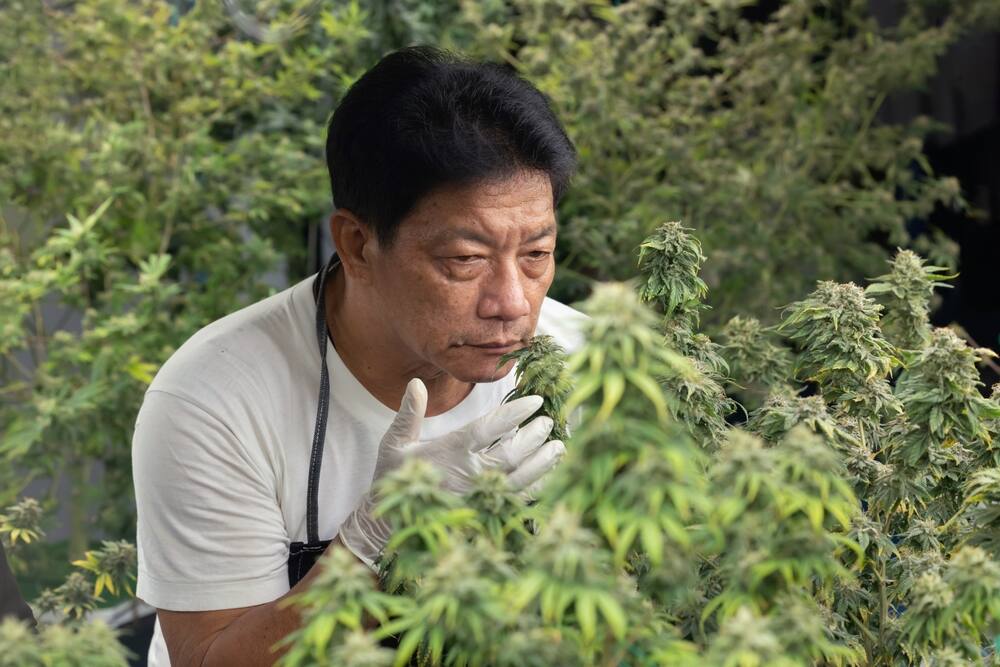
Look for fuzzy, powdery spots on your buds. Smell them too—mouldy cannabis often has a musty or "off" odour. If you suspect mould, it’s better to be safe and avoid using that bud.
Safe usage and storage of cannabis to prevent mould growth
Store your cannabis in a cool, dark place in airtight containers. Keep humidity levels in check with humidity packs. Proper storage ensures your buds stay mould-free and fresh for longer.
FAQ:
What causes mould to grow on cannabis plants?
High humidity, poor air circulation, and overwatering create ideal conditions for mould to grow on cannabis plants.
How can you tell if your cannabis plant has mould?
Look for white, grey, or black fuzzy spots on leaves and buds, brown wilted leaves, or a musty smell.
What are the different types of mould that affect cannabis plants?
Common moulds include powdery mildew, botrytis (bud rot), cladosporium, aspergillus, and white mould.
Is it safe to consume mouldy cannabis?
No, consuming mouldy cannabis can cause respiratory issues, allergic reactions, and even lung infections.
How can I prevent mould from growing on my cannabis plants?
Maintain low humidity, ensure proper air circulation, prune plants regularly, and use organic mould preventatives.
Mould is a persistent problem for marijuana growers, but with the right knowledge and care, you can keep your plants healthy and mould-free. Regular inspection, proper plant care, and maintaining the right growing environment are key. Remember, it's all about creating conditions that favour your plants and not the mould. Keep those buds happy, and you'll avoid many headaches and have a much better harvest!
